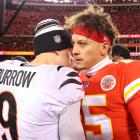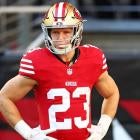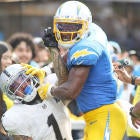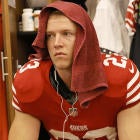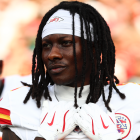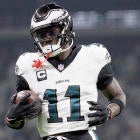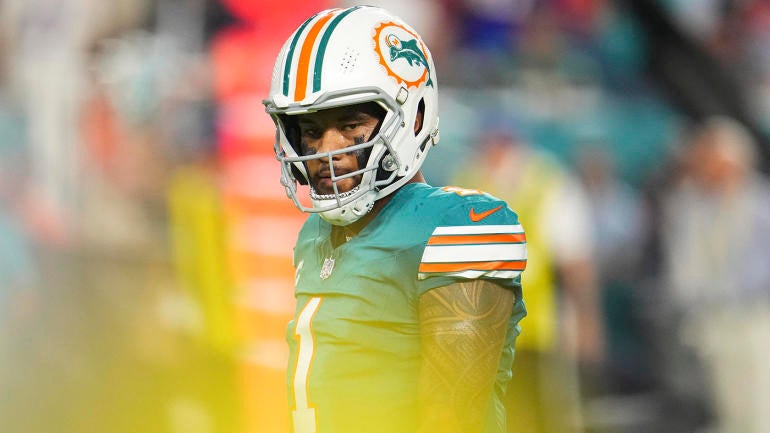
Tua Tagovailoa is one of just a few NFL players who has been placed in concussion protocol for a third time in the past five seasons, but the protocol by which the Dolphins quarterback would be cleared for future play will remain the same, the league confirmed Saturday.
"The purpose of the concussion protocol is to make sure the person doesn't return until they are fully recovered from that injury," Dr. Allen Sills, the NFL's chief medical officer, tells CBS Sports.
"Obviously we don't put timestamps on the protocol because of the fact that every injury is unique. … Now I would also say that it's intuitively obvious that healthcare providers are increasingly conservative in those time elements if someone has a repeated injury. But again, it has to account for the time interval between injuries and the duration of symptoms."
In Thursday night's loss to the Bills, Tagovailoa suffered his third known concussion in the NFL. He's one of at least 10 players since 2019 who has entered the protocol at least three times, according to CBS Sports research, and he's the only quarterback to be in the protocol three separate times in the past five years.
The league's concussion protocol, developed in consultation with the NFL Players Association, is a five-step program. Phase One requires symptom-limited activity, followed by aerobic exercise that continues with no symptoms. Phase Three involves a return to football-specific exercise for no more than 30 minutes before what would essentially be a return to practice. Phase Five is full evaluation and clearance by a team doctor and an independent neurological consultant.
Dolphins head coach Mike McDaniel has offered no timeline for Tagovailoa's potential return to play. Debates have been had across the football world about whether Tagovailoa should continue playing.
Whatever Tagovailoa ultimately decides will be up to him.
"I have great confidence in the Dolphins medical staff and their plan to work with the player and his representatives and family to get through this injury and then tackle all the questions that come alongside with that," says Sills, who added he hasn't treated Tagovailoa and has no inside information about his symptoms. "I think ultimately everyone in the medical field would have a pretty broad agreement about how to ensure someone has recovered from a concussion. What we lack are specific guidelines about how to predict future risks and lifetime numbers of concussions. And those are issues upon which smart, talented and experienced practitioners disagree, which tells you none of us really know the right answer yet."
Tagovailoa was wearing a helmet that the NFL and players union agree is the top of the market at reducing head-impact severity. The helmet, a VICIS ZERO2 MATRIX ID QB helmet, was tested by biomechanical experts and ranks as the top-performing helmet available to NFL quarterbacks this season.
The helmet underwent "laboratory impact conditions that are representative of high-severity impacts quarterbacks are likely to experience on-field," according to the NFL. "The laboratory test conditions were intended to represent potentially concussive head impacts in the NFL for quarterbacks," and Tagovailoa's helmet had extra padding in the occipital area.
Of course, a helmet cannot entirely prevent a concussion. Tagovailoa suffered the concussion on a red-zone play during the third quarter of Miami's 31-10 loss to Buffalo. He lowered his head as he prepared for a Damar Hamlin tackle. The right side of Tagovailoa's head hit Hamlin's chest and arm, and as the quarterback went to the ground, the back of his head struck the turf.
The league, in consultation with the players union, attempts to reconstruct head injuries using biomechanical data, but that takes more time than the few days since the injury.
"It is sometimes difficult to understand exactly where a concussion might have occurred because there may be more than one head blow on a play," Sills says. "… Trying to pinpoint exactly which of those cause the injury is really difficult to do.
A growing fear around the league is Tagovailoa's susceptibility to another concussion. A 2003 study of nearly 3,000 college football players revealed that players "reporting a history of three or more previous concussions were three times more likely" of suffering another concussion. It further stated that "slowed recovery was associated with a history of multiple previous concussions."
Tagovailoa's first known concussion came in college in 2019. He suffered a broken hip on the same play that ended his college career, and there's no public documentation of his recovery from that concussion.
His second known concussion -- and first in the NFL -- came in Week 4 of the 2022 season against the Bengals. The scary scene where he went into the fencing posture came just four days after a hit that left him wobbly against the Bills. He was not diagnosed with a concussion on that play vs. Buffalo and was allowed to play the following week. The concussion against the Bengals forced him to miss the next two games.
On Christmas that year, Tagovailoa suffered a concussion at some point during a game against the Packers where he threw three fourth-quarter interceptions. He reported symptoms the following day and was placed in concussion protocol. Tagovailoa would miss the next three games, which included a playoff loss, and it's unclear when he had a complete resolution of symptoms.
There has been nearly a year and a half between concussions for Tagovailoa, and nearly two years between concussions in which he exhibited the fencing posture. But as scary a sight as that posture is, Sills says that's not always an indication of concussion severity.
"This is again a point that we still need more research and understanding," Sills says. "You would obviously think that fencing posture would imply a more severe injury. But we often see players who have fencing posture recover and become symptom-free in even less time than players who do not have fencing posture. It's a very strange symptom."
In August, Tagovailoa signed a four-year, $212.4 million contract that made him the fourth-highest paid player by average annual salary in NFL history at the time.
The deal included $167 million that were guaranteed for injury, nearly $43 million of which he's already collected. Should Tagovailoa be medically forced into retirement, he'd be entitled to the remaining $124 million.
If Tagovailoa is cleared to return to football but chooses to retire, he would give up the remaining guarantees unless he and the Dolphins worked out an injury settlement agreement.
Raiders coach Antonio Pierce, a nine-year NFL linebacker, said this week he would tell Tagovailoa to retire.
"It's not worth it. It's not worth it," Pierce said. "Played the game, I haven't witnessed anything like I've seen that's happened to him three times. Scary. You can see right away, the players' faces on the field. You can see the sense of urgency to get Tua help.
"I just think that at some point, he's going to live longer than he's going to play football. Take care of your family."
While speculation around Tagovailoa will continue, McDaniel said this week any conversation around his future playing career is premature.
"I just wish that people would for a second hear what I'm saying that bringing up his future is not in the best interest of him," McDaniel said, "so I'm going to plead with everybody that does genuinely care, that that should be the last thing on your mind because -- what do you think if I were to answer that question, I'd be like, 'All right, this is my thoughts on his career' and he read it. If he agreed with it or he disagreed with it, either way I've just made him worse. So I'm not taking this opportunity.
"I don't think it's appropriate simply because of my care and regard, and I don't think those types of conversations when you're talking about somebody's career -- it probably is only fair that their career should be decided by them."











